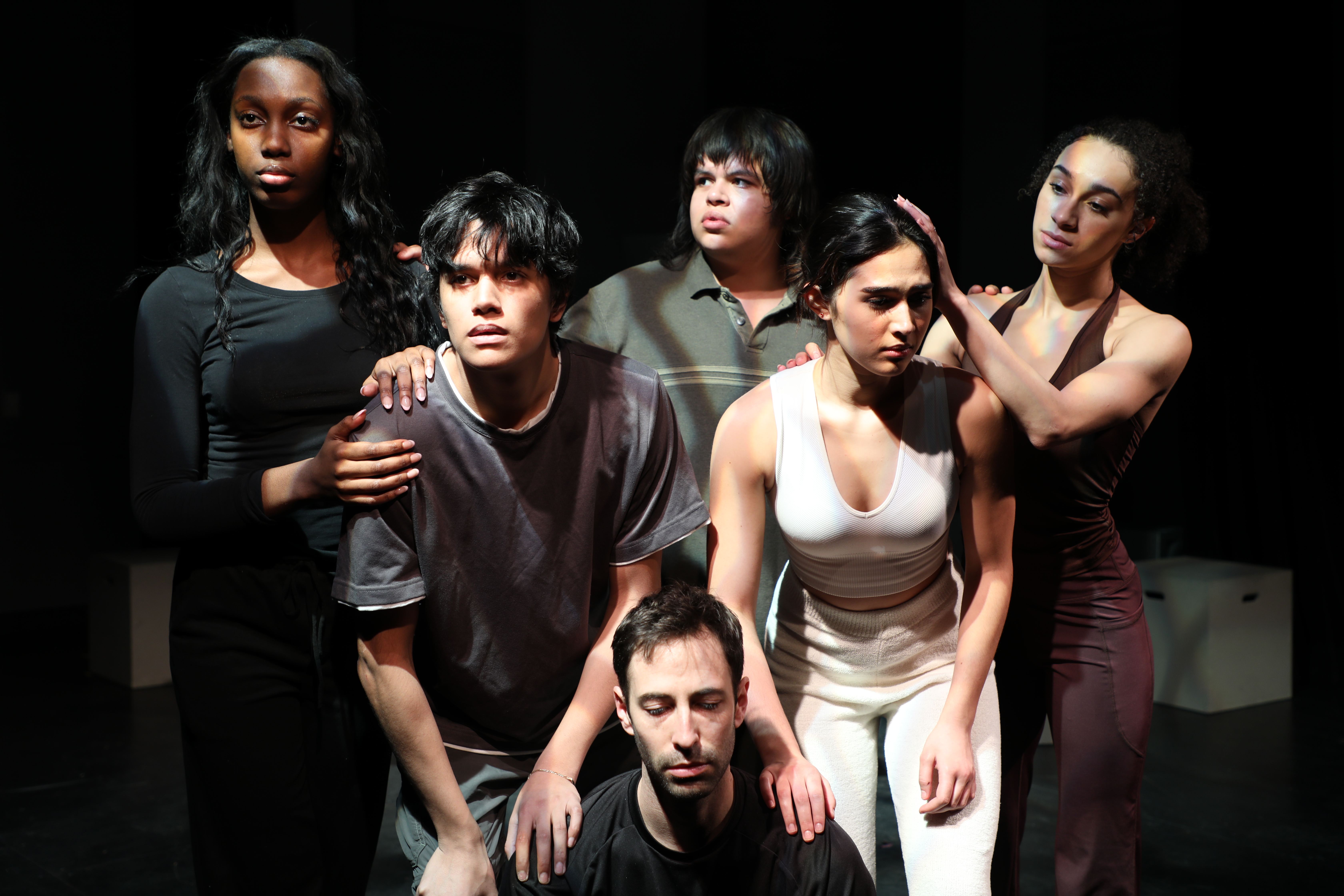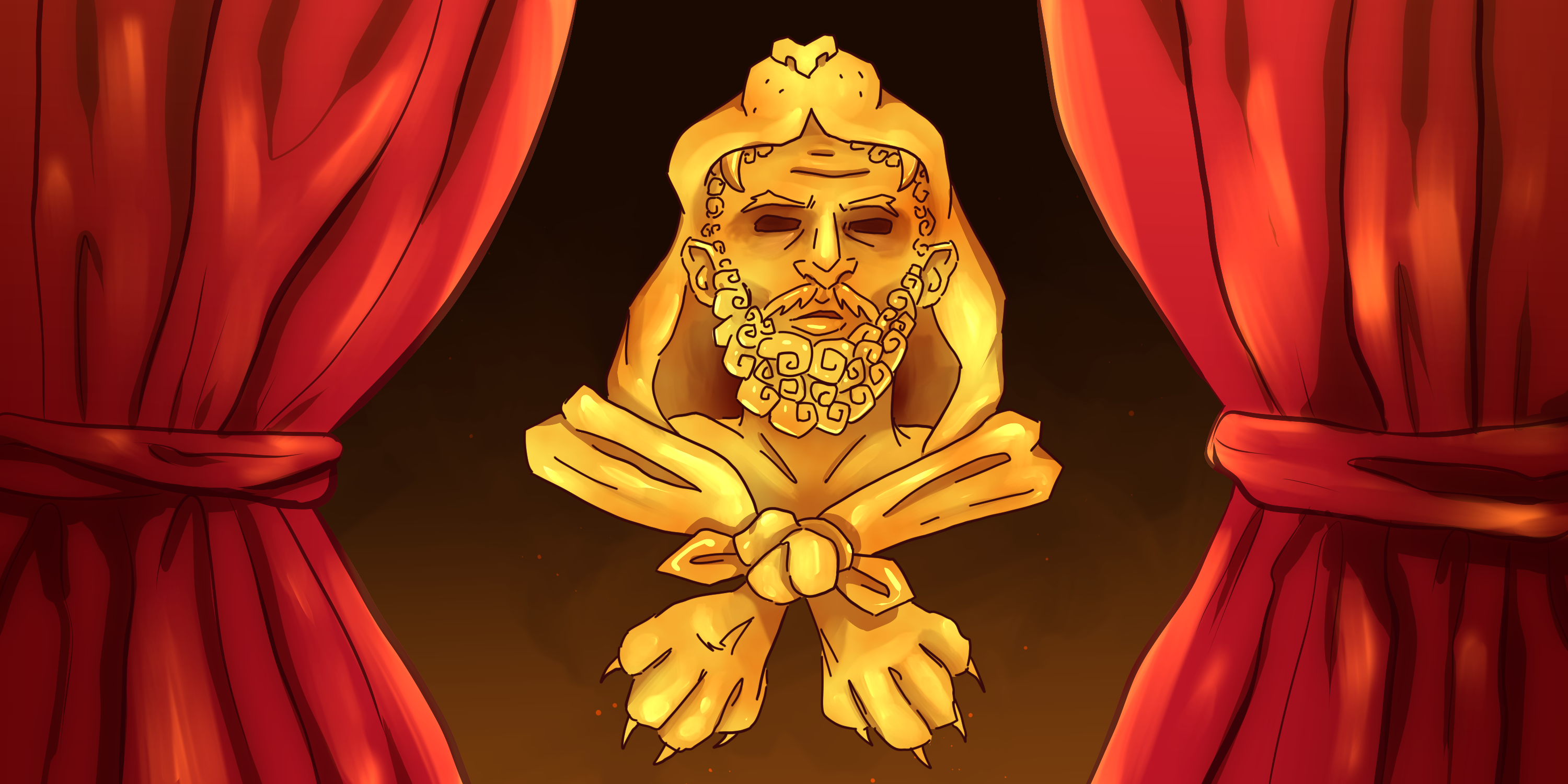A performance of grief and trauma inspired by the Euripides play.
The notes of an eerie violin taunted the audience as they entered the theater. It haunted them with the endless possibilities of what could occur on stage. Their predictions created anxiety-ridden thoughts that were put at ease when glimmers of white and jewel-tone lights washed over the actors.
Six strong actors stood on six stiff blocks pushing their energy into the ground and toward the audience as they performed “The Madness of Heracles” at The DePaul Theatre School.
It began in silence, with the cast swaying and flowing their bodies into poses like sculptures of Greek gods. With one big breath simulating one body, the actors swept themselves up and embarked on the anticipated journey of Heracles and Hera.
What is known to be the heroic tale of Heracles, from productions like The Walt Disney Co., was dismantled and proven to be quite violent and misogynistic by the cast. The theme unfolds as Heracles, the son of Zeus, returns from battle and unleashes his rage on his wife and family.
“We touch on themes of grief, PTSD [post-traumatic stress disorder], masculine/feminine roles in times of war and duties/expectations of mothers,” actor Bella Kelso said.
A well-developed script that went through countless revisions became the vision of the cast and crew. Their trick was basing their text off the physical images and shapes they created while feeling the intensity of the theme.
“My favorite moments were often silent,” Kelso said. “Sections of group improvisation where the ensemble moved as one body were such a joy to perform as each night found a new discovery.”

The cast of “The Madness of Heracles” poses on stage. The show which touches on themes of grief and trauma played at the DePaul Theater school through January 22. Photo courtesy of Kristen Morris
The cast continuously danced into one another and connected their movements so others could finish as if they were streams of water trickling into each other. They shared the same steps along the stage and gathered at fleeting moments of calmness, reflecting on each other’s emotions.
Stage manager Morgan Crump explained that the unity of actors walking and talking together was essential since they played the same character at times. Applying the same action to multiple characters made the intimate moments stand out throughout the show.
The life put into this piece was directed by Kristina Fluty, head of movement at DePaul’s Theatre School. Fluty is known for her beautiful, imaginative pieces that speak in the language of movement. With Fluty’s direction, the timing and illusions created on stage helped Kelso trust herself during improvisation, especially with minding the space and pace of other cast members.
“The most important thing in this show for me was presence. Listening to my body and to my ensemble,” Kelso said. “We had a lot of improvisation moments in our show, and in order to move freely without harming any cast members, you have to be very conscious of your movement, along with where others are around you.”
What guided the audience through the anger of Heracles and Zeus’ wife, Hera, was the symbolic red lighting. The color acted like a scarlet letter during times of battle between Heracles and his kids. The ruby red followed each actor like a hunt for revenge and illuminated each character in their worst moment.
Approaching the topic of Heracles as a ballistic man that murders his family is different, as many know him to rescue and adore a lady in despair, but the myth stands true. The recognition through this production is well deserved and the screams, tears and passion put into the show revealed the other side of Heracles.
“Our hope in the devising process was to show multiple sides of perspectives on what happened, without beating them over the head with how we want them to feel,” Kelso said.
Tackling a legend that has a strong culture for male dominance and violence is difficult to reframe, but “The Madness of Heracles” met the expectations of portraying broken souls on stage and new minds outside the theater.
Header illustration by Julia Hester




NO COMMENT